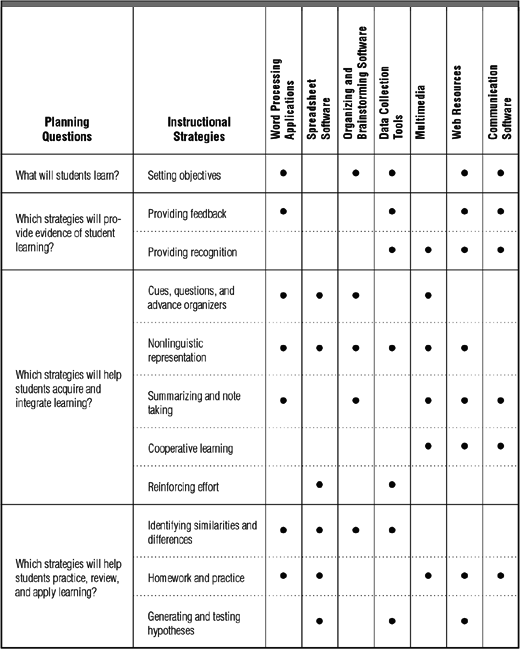I am a big fan of new technologies for the classroom. I am not a big fan of taking a new technology tool and coming up with ways to use it for learning. As much as I am a fan of mechanical tools, I do not dream up 1000 ways to use a screwdriver. When the job is at hand, and I know that a screwdriver fits the bill, I use it.
So where is the correlation between mechanical tools and technology tools? When you have a screw loose (pun intended), it is easy to assess what the problem is and what the tool is. It is not so easy to do the same in learning. Teachers know what their students need in terms of learning, but they do not necessarily know what technology tool can help them. This is especially true of web 2.0 tools, since new ones come out fast & furious.
The result? We get “*** (insert number) ways to use ****** (insert technology tool) in the classroom.” While this technique is meant to spark ideas and possibilities, I believe more often than not it promotes superficial investigation followed by a quickly fading interest and use. Technology tools are tools – definitely ones that have specific uses that may be new and unique – but are not one-size-fits-all. I am not saying that anyone intends them to be – just that the “*** ways to use” method promotes it.
I struggle with ways to introduce new tools to staff, as there is only so much time and attention that can be given. If tools are presented in the context of the job they are intended to help with (a toolbox), then it is much easier for people to see the need, then the tool to help with the need.
The best toolbox I have seen is the one provided by MCREL in the book, Using Technology with Classroom Instruction that Works. In the book, the authors take Robert Marzano’s research-proven instructional strategies and then categorize software tools that support the strategies.
Here is the graphic provided to illustrate the toolbox:
Conversations that start with the toolbox have questions such as, “How can I help students identify similarities and differences with technology? Using the chart, it is readily apparent that word processing applications, spreadsheet software, organizing and brainstorming software and data collection tools can support this need.
The next logical step is to analyze what specific tools withing those categories can help achieve the task. The book outlines many specific examples, but how can the need be addressed quickly, incorporating tools that may have come out since the book was written a few years back?
One way is with a wiki created by Stehpanie Sandifer, titled Web 2.0 & Marzano’s CITW. This community-editable wiki provides a directory of web 2.0 tools that support each of the strategies. This format is very useful as it can be updated regularly. It does not appear that too many edits have happened recently, but it is a great model for a living, dynamic technology toolbox for teachers. I just joined the the wiki and am hoping to contribute to it.
I’m going to keep looking, however, for a dynamic resource that allows the input of any technology tool, not just web 2.0 tools, withing the context of the CITW toolbox. There are many software packages out there that are not web 2.0 tools that can be included in the toolbox.
For me personally, one resource I’m going to check out is a book talk on Using Technology with Classroom Instruction that Works, being hosted by ISTE’s Innovative Learning Technology Special Interest Group on their wiki.
It is definitely much harder to analyze technology tools in this fashion, but at the end of the day, I believe it is much more worth it to have the need, followed by the toolbox, followed by the tool to do the job.
Image citation:
“Matrix.†Association for Supervision and Curriculum Development. 5 Nov. 2008
<http://www.ascd.org/ASCD/images/publications/books/pitler2007_fig7.gif>.

Comments
3 responses to “A Zillion Ways to Use Technology in the Classroom”
I am glad you like our book, “Using Technology with Classroom Instruction that Works.” The matrix was accurate when the book was published, but we now talk about communications tools as part of each strategy. New resources that didn’t exist at the time like VoiceThread, Google sites, and others are part of our face to face workshops now as well.
Thanks, Howard. I can only imagine how tough it is to keep up with the changes compared to 2007 – I like the idea that communication tools are part of each strategy now.
Perhaps future editions of the book should be web-based in some format where the resources can be updated regularly. Perhaps market a time period of access for those who purchase the “book” but get continual updates for that time period (1 – 3 yrs, for example).
Hi Michael,
I’m so glad you picked up on the book study. I have a few more questions left to post, but I hope to see the conversation grow as others log on. Thanks for mentioning it.